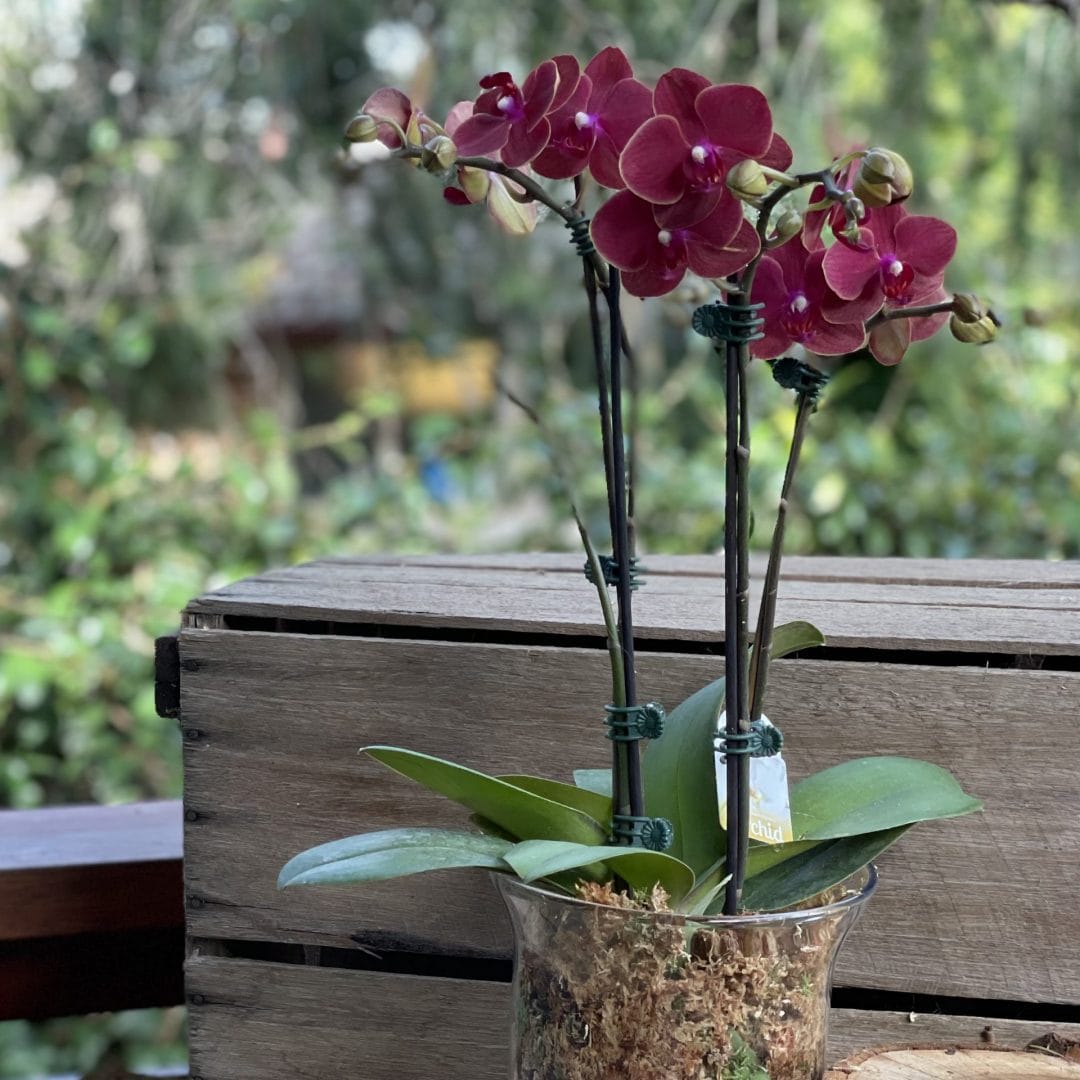The orchid. A beautiful and eye-catching addition to any home, orchids are both loved and feared by the plant community. Under the guise of being ‘difficult’ and ‘troublesome to care for’, many shy away from this plant, and in turn miss out on one of the most beautiful flowering plants available. So where did orchids come from, and how to you make sure you keep them alive and thriving? Today’s blog will get you fully informed on your orchid’s care.
The phalaeonopsis orchid, or ‘Moth Orchid’, is one of the most common orchids available, and got its name due to the beautiful wing like shapes of the flower petals. Orchids grew primarily in tropical environments, originating in South East Asia and the Phillipines, however most continents have their own species (apart from Antarctica). There are a wide plethora of colours available, ranging from bright orange, to white, to deep burgundies. Because of this, orchids are a common choice for striking centrepieces at events, or as beautiful living gifts for loved ones. So now that you have a little bit of background, here’s how to take care of your new friend.
Keen orchid enthusiast and author Raffaele Di Lallo has written a great how to guide named ‘Moth Orchid Mastery’, available on his website for digital download, however if you would prefer a quicker run down, here are some basic knowledge tidbits to get you started.
-Keep them damp, not wet, with proper drainage. Orchids don’t like to be sat in water for long periods of time, and will most likely die if left to absorb too much water. Soaking them is fine, however make sure to allow them to drain freely for a few hours afterward to be sure all the excess water has had a chance to be expelled.
-Don’t wet the leaves, stems or flowers, water only around the base or the exposed ‘aerial roots’. This will ensure there isn’t any risk of moisture between the leaves causing the plant to rot. Also, make sure to feel around the roots every once in a while to make sure they’re plump and full. If they’re looking shrivelled, you may not be giving the orchid enough water.
-Make sure they’re getting enough light, but not too much. Plants need water and sunlight to survive, and orchids don’t mind some direct sunlight, especially when they are due to flower. However, keeping them in a permanent spot where direct light is constant is also not the best idea. Consider them as you would most other houseplants: sun is good, but too much could potentially dry them out or cause ‘bud blast’ (where the plant drops all of its flowers). A window ledge that doesn’t get sun all day is a good choice!
-Don’t let them get too cold! Orchids enjoy warm environments, and cold orchids are likely to not flower as well, if at all. Once you’ve found a place where they’re happy, make sure to leave them be, as they’re probably receiving enough warmth and don’t like to be moved around too often.
And that’s it! Keep these handy hints in mind the next time you go plant shopping, and get ready to adopt a new flowering beauty into your home. You won’t regret it!

Comments
Post a Comment